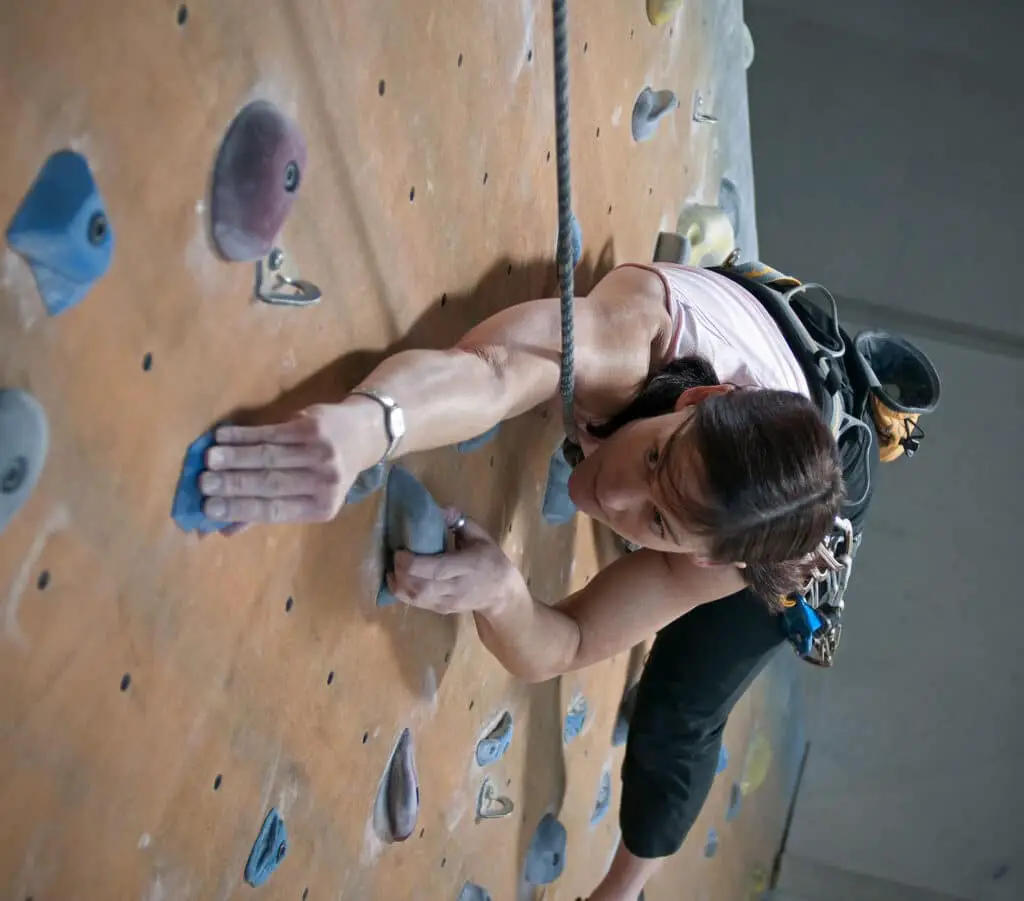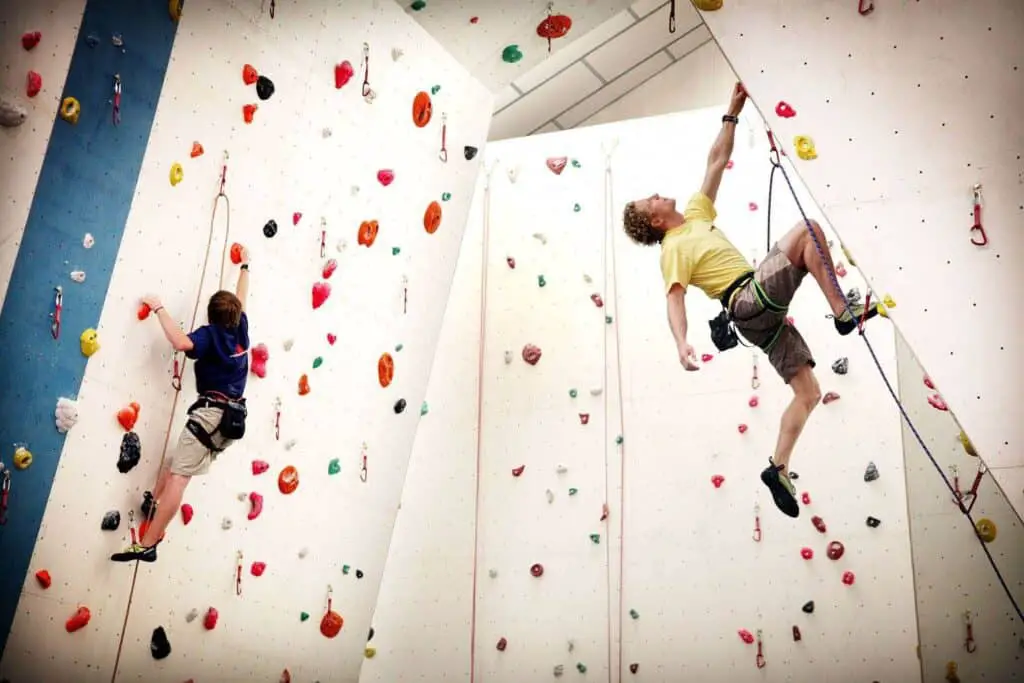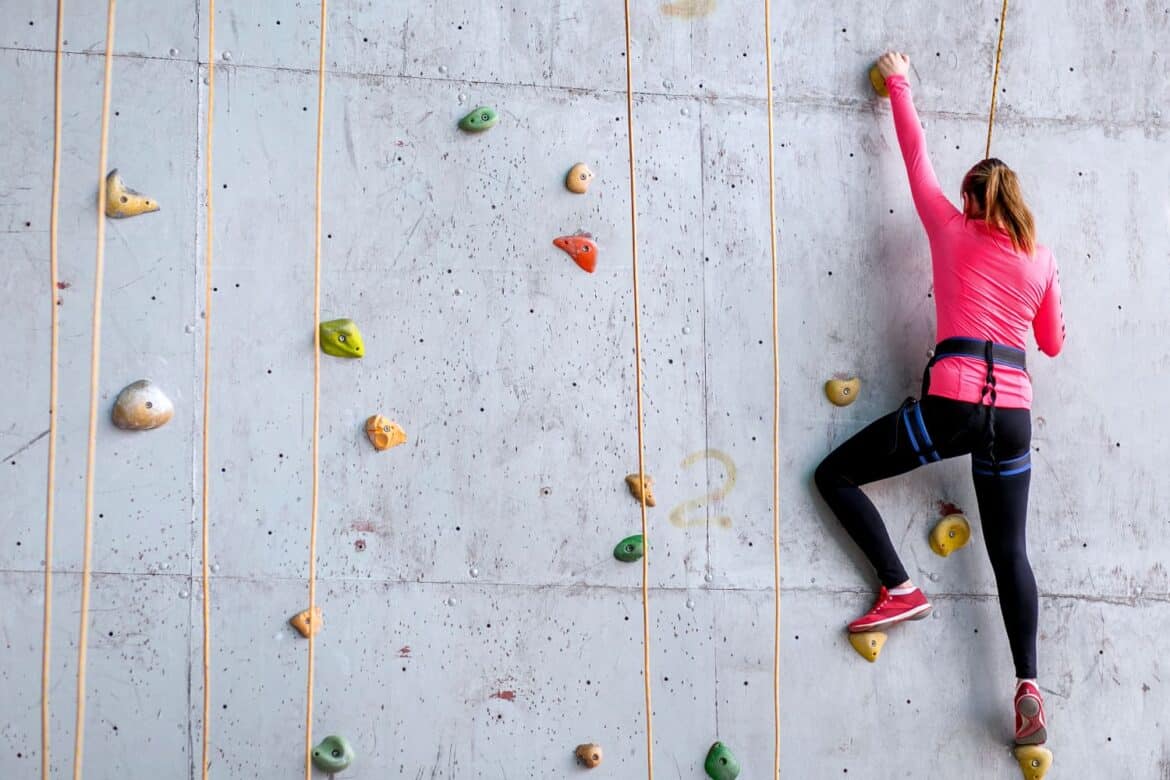Introduction
How To Start A Climbing Gym: Embarking on the journey of starting a climbing gym is a thrilling endeavor that blends a passion for rock climbing with entrepreneurial spirit. In recent years, indoor climbing has surged in popularity, attracting climbers of all skill levels and ages. This trend has created a promising opportunity for individuals or groups interested in establishing their own climbing gym. However, the process of launching a successful climbing gym requires careful planning, a deep understanding of the climbing community, and a dedication to providing a safe and engaging environment for climbers. Whether you’re an avid climber seeking to turn your passion into a business or an entrepreneur with an eye for adventure, this guide will navigate you through the essential steps to take when starting your very own climbing gym. From conceptualizing the gym clothes layout and obtaining the necessary permits to curating an inclusive climbing experience, we’ll explore the key aspects that contribute to a thriving climbing gym venture. So, harness your enthusiasm and get ready to ascend the heights of the indoor climbing industry, one foothold at a time.
In the realm of adventure and fitness, few activities offer the unique blend of physical prowess, mental fortitude, and exhilaration quite like rock climbing. As this dynamic sport continues to captivate the hearts of enthusiasts worldwide, the demand for accessible and well-equipped climbing spaces has grown exponentially. This demand, coupled with the growing trend of indoor fitness pursuits, has paved the way for aspiring entrepreneurs and climbing aficionados to explore the enticing realm of starting their own climbing gym. A climbing gym is more than just a business; it’s a community hub, a training ground, and a sanctuary for individuals seeking a respite from the ordinary. Crafting such a space requires more than just a passion for climbing – it demands a strategic approach, careful planning, and a deep appreciation for the nuances of both climbing techniques and business operations.
In this comprehensive guide, we will navigate the intricate terrain of establishing a climbing gym from inception to execution. From the initial stages of conceptualization and location scouting to the intricacies of route setting, safety protocols, and fostering a sense of belonging, each step is a foothold toward your ultimate goal. Whether you’re a climbing enthusiast aiming to share your love for the sport or an entrepreneur with an eye on a dynamic and growing market, this guide will equip you with the insights and strategies needed to ascend the heights of the climbing gym industry. So, chalk up your hands, tighten your harness, and prepare to embark on a journey that intertwines business acumen with the vertical world of climbing.

What do I need to start climbing at a gym?
If you’re climbing routes (anything with a rope), you’ll need a harness, climbing shoes, chalk, a belay device and a locking carabiner. If you’re bouldering (no ropes), just shoes and a chalk bag will suffice. Remember, you don’t have to get into the medieval practices of foot binding.
Indoor rock climbing offers a thrilling and challenging way to stay active, build strength, and engage in a dynamic community. If you’re eager to dive into the world of climbing at a gym, there are a few essential items and steps you’ll want to consider. Whether you’re a complete beginner or transitioning from outdoor climbing, here’s a comprehensive guide on what you need to start climbing at a gym:
Appropriate Clothing: Comfort and flexibility are key when it comes to climbing attire. Opt for flexible, moisture-wicking clothing that allows a full range of motion. Most climbers prefer wearing fitted pants or shorts and a snug-fitting shirt.
Climbing Shoes: Climbing shoes are specifically designed to provide a secure grip on the climbing holds. They have a snug fit to maximize sensitivity and precision. When selecting climbing shoes, it’s important to find a pair that fits comfortably without causing excessive pain.
Chalk and Chalk Bag: Chalk helps keep your hands dry and enhances grip on holds. Climbers often carry chalk in a chalk bag attached to their harness for easy access during climbs.
What makes a successful climbing gym?
Creating an ultra-safe environment with properly trained staff. Making the gym group friendly. Providing the new climber with instruction and encouragement. Ensuring that the ‘fun factor’ is high in order to generate strong word of mouth marketing.
A successful climbing gym is more than just a collection of walls and holds. It’s a dynamic and thriving community hub that fosters growth, connection, and a deep love for the sport. If you’re considering venturing into the world of indoor climbing and want to ensure your gym’s success, here are the key factors to consider:
Safety First: Safety is paramount in a climbing gym. Implement comprehensive safety protocols, provide thorough staff training, and regularly inspect equipment to ensure a secure environment for all climbers.
Varied and Engaging Routes: The heart of a climbing gym lies in its routes. Offering a diverse range of routes for climbers of all skill levels keeps the experience engaging and ensures that both beginners and seasoned climbers find challenges that resonate with them.
Quality Route Setting: Skillful route setting is an art form that requires creativity, knowledge of climbing techniques, and an understanding of your gym’s clientele. Well-set routes enhance the climbing experience and keep climbers coming back for fresh challenges.
How do you become a climbing trainer?
In order to become a rock climbing instructor, you first need a passion for rock climbing and working with others. The training qualifications for this career include a certification training course in areas including wall climbing, single pitch, and the rock guide program from the AMGA.
If you possess a deep love for climbing and a desire to share your expertise with others, a career as a climbing trainer might be the perfect fit. Guiding climbers through their journey, imparting essential skills, and helping them reach new heights can be both fulfilling and rewarding. Here’s a step-by-step guide to becoming a climbing trainer.
Master Your Climbing Skills: Before you can teach others, you need to be proficient in climbing techniques, safety protocols, and route navigation. Spend time honing your skills in various climbing disciplines, whether it’s sport climbing, bouldering, or trad climbing.
Gain Experience: Climbing experience is invaluable. Spend ample time climbing both indoors and outdoors to gain a well-rounded understanding of different environments, holds, and challenges.
Obtain Certifications: While not always mandatory, obtaining climbing certifications can enhance your credibility and open up opportunities. Organizations like the Professional Climbing Instructors Association (PCIA) and the American Mountain Guides Association (AMGA) offer training and certification programs for climbing instructors.
Is there money in climbing?
You don’t need to be an elite climber to earn a living from your hobby. If you’re passionate about climbing and teaching, working as an instructor at a gym is a possibility. Senior instructors with proven experience (and sometimes qualifications, depending on where) can earn about twenty dollars per hour.
Indoor climbing gyms have become a focal point for climbers seeking a controlled environment to train, socialize, and experience the thrill of climbing. Successfully operating a climbing gym can yield profits, but it also requires significant investment upfront. Costs include facility construction, route setting, safety equipment, staff salaries, and ongoing maintenance. The potential revenue comes from memberships, day passes, classes, events, and gear sales. A well-managed gym with a strong customer base can generate steady income over time.
Climbing guides and instructors play a crucial role in introducing beginners to the sport and providing advanced climbers with specialized training. Offering guiding services for outdoor climbs, teaching climbing techniques, and leading workshops can be financially rewarding. However, competition may vary depending on the location and the demand for climbing instruction.
The climbing gear market encompasses everything from climbing shoes and harnesses to ropes, carabiners, and belay devices. Operating a climbing gear store or online retail platform can be profitable, especially if you cater to a diverse range of climbing disciplines and skill levels.
How do climbers get paid?
Sponsorships are the main way that professional climbers get paid. Other income can come from public speaking events, guiding, or books/movies. Unfortunately for the sport, there isn’t really a climbing ‘league’ in the way that you have organizations like the MLB, NBA, and NHL to pay their athletes.
At the pinnacle of the climbing world are professional athletes who compete on national and international stages. They earn money through sponsorships, prize money from competitions, and endorsement deals. These climbers often excel in disciplines such as sport climbing, bouldering, and speed climbing, and their success relies on a combination of skill, dedication, and marketability.
Indoor climbing gyms have become a focal point for the climbing community. Climbers can find employment as route setters, instructors, front desk staff, and managers. Gyms offer salaries, hourly wages, and benefits, making it possible for individuals to work in an environment they’re passionate about while earning a steady income.
Guiding services are in demand for outdoor climbing adventures. Climbing guides earn money by leading groups on climbs, providing instruction, and ensuring the safety of participants. Climbing gyms and outdoor organizations often employ climbing instructors to teach classes, workshops, and private lessons.
What is gym climbing called?
Generally, three types of gym climbing are bouldering, top rope climbing, and lead climbing. Each of these areas hones different skills and provides various kinds of experiences.
Bouldering is a popular subset of gym climbing that focuses on shorter, often challenging routes known as “problems.” Climbers ascend bouldering walls, which are generally lower in height but require intricate technique and strength to conquer. Bouldering walls are typically equipped with thick crash pads to cushion falls, eliminating the need for ropes and harnesses. Bouldering emphasizes dynamic movement, power, and problem-solving skills.
Sport climbing in gyms mirrors the outdoor experience of climbing with ropes, bolts, and harnesses. Climbers ascend walls, clipping into pre-placed quickdraws for protection as they ascend. Gym sport climbing routes vary in difficulty and length, providing climbers with opportunities to practice endurance, technique, and lead climbing skills in a controlled environment.
Top-rope climbing is another style of gym climbing that involves ascending routes with the safety of a rope anchored at the top of the wall. The climber’s rope passes through an anchor at the top of the wall and is secured to a belayer, who manages the rope’s tension as the climber ascends. Top-rope climbing is often considered more beginner-friendly, as it offers added security for those new to climbing.
What skill do you need for climbing?
Climbing is a skill-based activity. Before you climb your first rock face, it’s essential that you learn some of the basics. Skills, like belaying, rappelling, and setting anchors, mean that you and your climbing partner can have a safe experience.
Climbing requires a strong foundation of physical strength and endurance. Building upper body and core strength is crucial for maintaining control on the wall, while leg strength aids in pushing upward and maintaining balance during climbs. Engaging in regular strength training and cardiovascular exercise helps climbers develop the stamina needed for sustained efforts on the wall.
Proper technique and efficient movement are fundamental in climbing. Learning how to use your body’s positioning, balance, and weight distribution optimally can make a significant difference in conquering routes. Climbers must master skills such as edging, smearing, heel hooks, toe hooks, and flagging to navigate a variety of holds and features on the wall.
Climbers heavily rely on grip strength and finger dexterity to hold onto holds of different shapes and sizes. Strengthening finger muscles through specific exercises, like hangboarding, can improve grip endurance and precision.
Do professional climbers climb every day?
Even professional climbers use resting as a tool, only climbing every day during peak periods in a training cycle or on a climbing trip, then usually, taking a decent length break to recover.
Professional climbers follow structured training plans that incorporate various elements of climbing-specific exercises, strength training, endurance conditioning, and technique refinement. These training regimens are designed to target specific weaknesses and enhance overall performance. Training days are purposeful, focusing on specific goals, be it strength gains, refining technique, or improving mental focus.
Equally essential in a professional climber’s routine is rest and recovery. Intense climbing strains the body, pushing muscles, tendons, and joints to their limits. Rest days allow for physical recovery and injury prevention. It’s during these rest periods that the body repairs itself and grows stronger. Adequate sleep, hydration, and proper nutrition are all crucial components of a professional climber’s recovery routine.
Professional climbers pay close attention to their bodies. They know when it’s time to push through a tough training session and when it’s wiser to dial it back to prevent injury or burnout. Overtraining can lead to stagnation or setbacks, and professional climbers understand that a sustainable approach yields better long-term results.

Conclusion
Embarking on the endeavor of starting a climbing gym is a thrilling and rewarding journey that combines a passion for climbing with the fulfillment of creating a unique and vibrant community space. Throughout this guide, we’ve explored the intricate steps and considerations involved in turning your vision into a reality. From conceptualization and location selection to safety measures, route setting, marketing strategies, and fostering an inclusive atmosphere, the climbing gym landscape has been unveiled, providing you with the tools to succeed. Remember, a successful climbing gym is more than just walls and holds – it’s a sanctuary where individuals of all skill levels come to challenge themselves, build connections, and share in the joy of conquering heights both physical and personal. Your dedication to safety, innovation, and customer experience will be the foundation upon which this community thrives.
As you prepare to harness your entrepreneurial spirit and ascend the walls of this dynamic industry, keep in mind that challenges may arise, but each obstacle is an opportunity to learn and grow. With careful planning, a commitment to continuous improvement, and a genuine love for climbing, your climbing gym venture holds the potential to become a beacon for adventure seekers and fitness enthusiasts alike. So, tie your knots, set your routes, and welcome climbers to a space that embodies the spirit of exploration and accomplishment. As you look back on your journey from an idea to a fully operational climbing gym, may the memories of triumphs reached and hurdles overcome serve as a reminder that with dedication and determination, the sky – or in this case, the wall – is truly the limit.
In the pursuit of transforming a passion into a thriving business, the journey to start a climbing gym has been revealed as a remarkable fusion of adventure, innovation, and community-building. As we conclude this guide, it’s clear that the endeavor is not only about constructing walls and routes, but also about constructing an environment where aspirations are met, friendships are formed, and personal limits are shattered. Starting a climbing gym is a testament to the power of combining entrepreneurial vision with a deep appreciation for the sport. We’ve navigated the complexities, from initial planning to safety protocols, from marketing strategies to route setting techniques. The walls you build and the holds you place will become more than physical components – they will be the foundation of challenges embraced and stories created.

